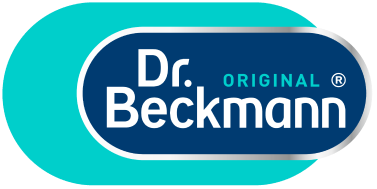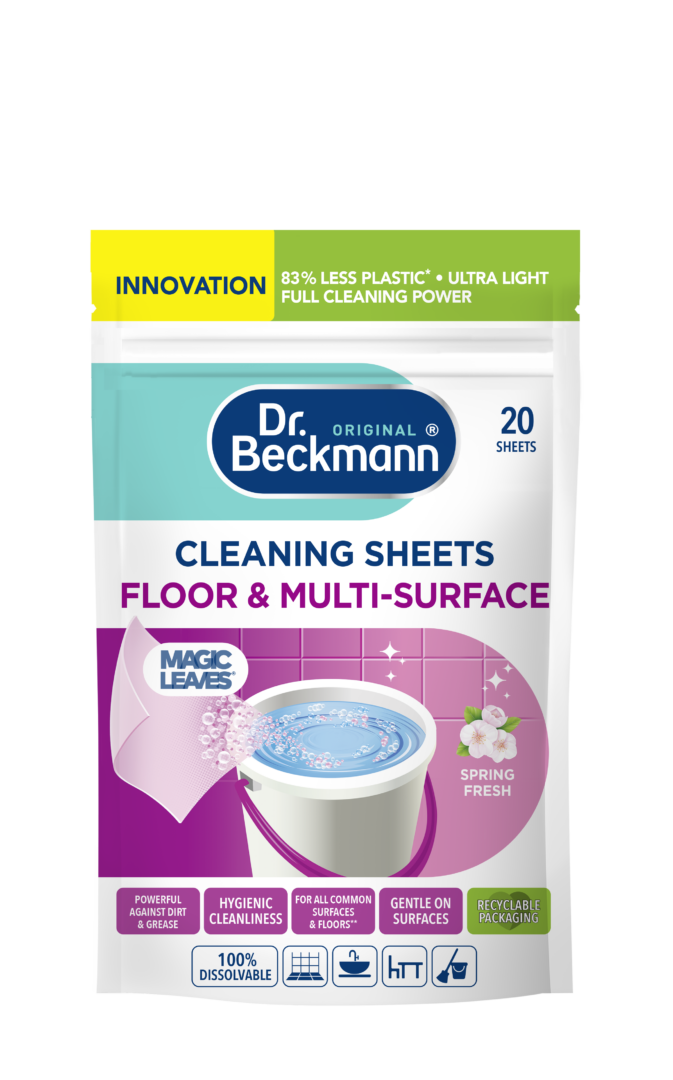FAQs
At Dr. Beckmann we are committed to helping answer your questions. Answers to our top frequently asked questions are given below. We also answer customer questions through our Cleaning Tips and Solutions section.
If you cannot find the answer to your question then please feel free to send a question to our customer service department via our contact page.
Powders are often more effective on heavily soiled or stained items. Liquids are often more effective for delicate items and light duty washing. However, today’s laundry detergents are sophisticated enough to cope with any type of laundry load and a lot of laundry liquids will remove heavy soiling very effectively.
Once stains have been washed it can make it very difficult to remove, as they then become set in the fabrics. For the best stain removal results it is advised that the stain is treated as soon as possible.
In theory, too much fabric softener on towels can reduce the absorbency of the towels. However, towels which are not dried in a tumble dryer can feel quite rough and harsh so a small amount of fabric softener will help this and not impede the absorbency too much.
Suede and leather are specialist “fabrics” and as such they need to be treated with products which are specifically for them. Dr Beckmann would recommend that you consult a professional dry cleaner who specialises in the cleaning of suede and leather items. Stains on leather furniture can be treated using specialist products which can be purchased from all reputable furniture stores.
More and more garments are manufactured using non-colourfast fabrics. As such, it is essential to pre-test most laundry additives prior to use to avoid colour loss. To avoid costly mistakes you may wish to follow the instructions below:
Test in an inconspicuous area of the item to be treated e.g. The hem, under arm, inside pocket, zip placket. Dampen the area with water and apply a small amount of the stain removal product. Allow the product to soak in for up to 10 minutes. Blot the area with a white cloth. Check for any colour transference onto the cloth. If any colour appears on the white cloth the item is not colourfast to the product and is not suitable to be used. Then, allow the test area to dry out. Check for any colour loss before rinsing thoroughly. For Dr. Beckmann Colour Run Remover, follow the colourfast test instructions exactly as directed on pack. If in doubt seek further advice from our cleaning tips and solutions page.
Most of these types of garment cannot be washed using a standard detergent based on laundry powder as the detergent will break down the protective water proofed layer. There are proprietary products on the market for this type of garment although ordinary soap flakes will work just as well. Take care if using them in your machine as they can suds up. Follow the dosage instructions as per the manufacturer’s recommendation.
Enzymes are found in biological washing detergents and assist with the breakdown and removal of certain types of protein, starch and fat-based stains. As enzymes can be killed off at high temperatures it is recommended that biological laundry detergents are used in 30º and 40º wash cycles and ideally in cold fill washing machines.
The difference between the two is that a colourcare detergent does not contain oxygen based bleaching agents, which help to maintain the brightness of colours and reduce fading of dark coloured garments. Other detergents which contain bleaching agents are generally recommended for whites.
This cycle is ideal for soaking and washing heavily soiled items. You would usually put detergent into both the pre-wash section and the main wash section of your detergent drawer in two stages so your clothes are actually being washed twice. You can also add your stain remover powder to the pre-wash section of the drawer as this will start to loosen and break down any stubborn stains.


